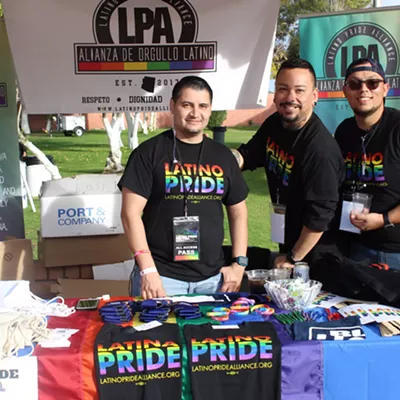That wasn't the case a century ago. In 1899, New Year's Eve was on a Sunday. That, plus the fact that many people were smart enough to realize the new century wouldn't begin until the end of 1900, meant that nobody was very excited about marking the occasion.
But there were some festivities. At a chicken and turkey shoot at Silver Lake on the Santa Cruz River south of town, contestants could bag birds for 25 cents. The privately owned city water company also brilliantly lit their large stand pipe to mark the celebration.
Then on New Year's Day itself, a football game was played at the university between a team from the local Indian School and a contingent from town. That evening, the Order of Railway Conductors sponsored a grand ball at the city's Natatorium, followed by a late-night supper.
Many people, however, agreed with the city's evening newspaper, the Arizona Daily Citizen, which wrote about the end of 1899: "If those who believe that at 12 o'clock New Year's eve we took a sudden leap into the 20th century will just keep up the argument for another full year they'll be right sure enough."
But enough things had happened around the end of the year to make it a memorable period in Tucson history. One of those was the city's first car, a "locomobile," which arrived by train from Massachusetts on December 30 and was delivered to its owner, Dr. Hiram Fenner.
He gave free rides in the two-person, steam-powered vehicle, which had one tank for five gallons of gasoline and another for 16 gallons of water. According to the Arizona Daily Star's Sunday morning edition of December 31, the car cost $800 delivered and "fifty miles can be covered in five hours on a good road."
Local politics 100 years ago was dominated by Mayor Gus Hoff's successful drive for the city to buy the water company before the end of his two-year term in office. He proposed to finance the purchase by selling off publicly owned land around Armory Park on Sixth Avenue, then known as "Military Plaza," for development.
Armory Park was considered to be a great distance from Tucson's downtown in 1899. Back then, the city's business core was centered along Congress Street west of Stone Avenue. Multi-story commercial establishments lined both sides of the street and a few were even found in "The Wedge," an island in the middle of Congress Street.
Because of the community's growth, which would reach a population of 10,000 in 1900, some retailers were looking to move away from West Congress. Wagon maker Fred Ronstadt was one of them. A fellow businessman warned him, "Fred, I hope you aren't going to move way out in the country, you have established a nice little business right where you are, all your friends are bringing their work to you, but now that you are going (to move), no one will ever be able to find you."
Ronstadt ignored that advice and moved his business three blocks to the east of "The Wedge," to the corner of Scott and Broadway. In the new location, the business prospered.
By the end of 1899, the University of Arizona had just finished its first season of playing football. The squad was small, having only about 15 players, and they concluded the year with a 1-1-1 record.
Their Thanksgiving Day game was played at Carillo Gardens park near the Santa Cruz River, and ended with an 11-to-2 loss to Arizona Normal School, which would later become Arizona State University. But, according to the local campus newspaper The Sage-Green and Silver, "The University is pretty well satisfied with the outcome, owing to the fact that this being the boys' first football season they could hardly expect to beat a team who had three years' experience."
At the end of the 19th century, the University of Arizona had about 150 students, most of them in high school, since the institution served as Tucson's preparatory school as well as a college. No tuition was charged to university students, but a one-time only matriculation fee of $5 was assessed.
The campus consisted primarily of one administrative and instructional building, today's Old Main. A few cottages were also present and were used for dormitories and the president's residence. A mule-drawn streetcar ran out to the campus, which in those days was thought to be a long way from town.
There was a small library in Old Main, with about 3,600 volumes, but the people of Tucson wanted better than that. Within a few years, Andrew Carnegie would provide funds to construct a library near Armory Park which would contain 25,000 volumes. That structure still stands, and today houses the Tucson Children's Museum.
Problems with traffic and water; businesses fleeing downtown; a growing population demanding more services; a mediocre football season from the University of Arizona: seems like only yesterday.






